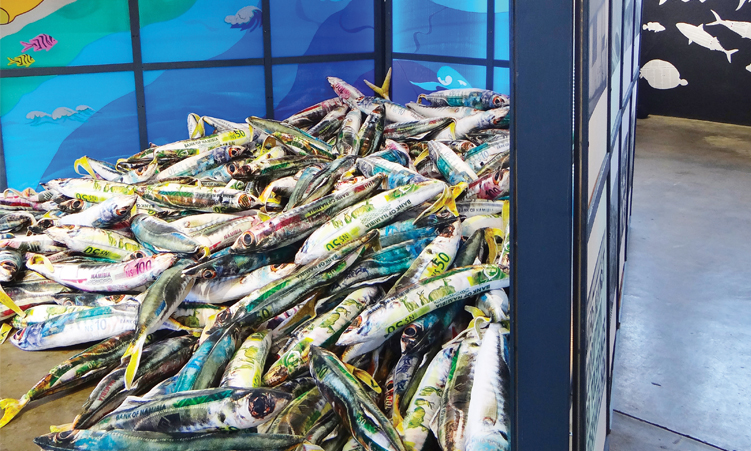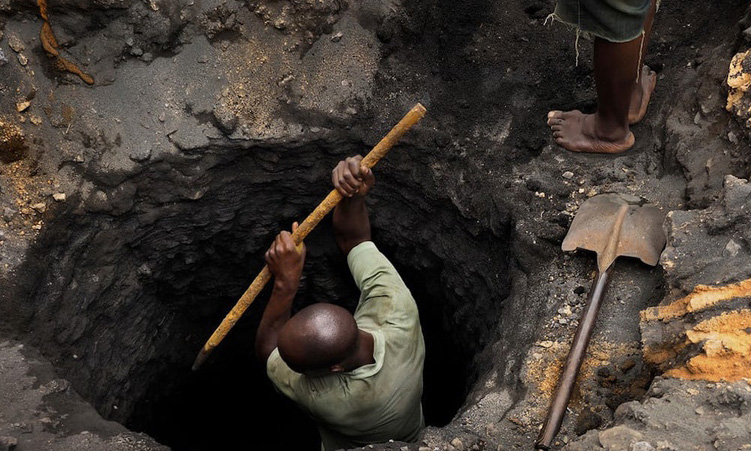THE matter of fish continues at The Project Room as Ruth Stanford and Vilho Nuumbala’s ‘Troubled Waters’ follows ‘the fish that sees its water getting shallow cannot be stranded’.
Concerned with issues of global corruption and localised through Nuumbala’s black and white photographs depicting the toll such dealings have on the average Namibian, the exhibition employs the ongoing Fishrot scandal as a point of departure as Stanford’s polycarbonate panel installation seems to spill money fish from an idyllic water scene.
Contrasting the abundance of Stanford’s installation in the foreground with the anterior underbelly of corruption as portrayed in Nuumbala’s photographs, the exhibition paints a bleak picture of a nation where a “no job opening, no vacancy, no CVs” sign speaks to Namibia’s crisis of youth unemployment, dilapidated corrugated iron shacks sprawl behind children playing soccer using tall sticks for goal posts, and a protester inquires “Mr President, will there by any resources left for my children?”
As incisive as an image of an unhoused person sleeping outside the Ministry of Lands and Resettlement in a series that zooms in on a gilded statue atop the towering Swapo Party National Headquarters, Nuumbala collects images of a country crumbling in the wake of untold corruption, kickbacks and bribes.
Stanford’s fish, stuffed to the gills and featuring skin fashioned to look like the local currency, connote the Fishrot scandal as well as the wealth of natural resources that the people in Nuumbala’s images rarely benefit from. This, while those who control these assets enjoy the calm waters and blue skies of Stanford’s panels. In the very back of the exhibition, a school of newspaper fish swim on a dark wall, each pregnant with stories of corruption from across the globe.
Framing Fishrot as emblematic of “how corruption steals livelihoods, damages economies, ruins lives, and erodes people’s faith in their leaders,” Stanford underscores how acts of corruption affect communities around the world “when greed overtakes public service”.
“Acts of corruption such as these are especially harmful in nations with rich natural resources and high rates of income inequality like Namibia. With every major scandal like Fishrot that rises to the attention of the international media, hundreds more little acts of corruption happen every day,” says Stanford in the exhibition statement.
“These smaller crimes pave the way for much larger ones, and they shift our focus from where it is needed most: on serious global challenges that can only be resolved if we all work together,” Stanford says.
“The growing climate crisis is a good example. While government officials steal from their own citizens, soaring ocean and air temperatures are triggering a cascade of alarming events that threaten food supplies, infrastructure, ecosystems, and human health.”
Nuumbala and Stanford were connected by The Project Room director Frieda Lühl, who noticed similar themes in their work, particularly their shared interest in social justice and their focus on the lives of ordinary, often marginalised or overlooked people. The artists, who reside in Windhoek and Germany (Nuumbala) and North America (Stanford), built the exhibition via long distance collaboration amid the Covid-19 pandemic.
“‘Troubled Waters’ encourages viewers to consider how acts of corruption – large and small – may affect our lives and what we, as a global community, can do to stop them,” says Stanford.
A pertinent scene of the damaging and rising tide of corruption at home and overseas, ‘Troubled Waters’ will be on display until 12 August.
-martha@namibian.com.na; Martha Mukaiwa on Twitter and Instagram; marthamukaiwa.com
Stay informed with The Namibian – your source for credible journalism. Get in-depth reporting and opinions for
only N$85 a month. Invest in journalism, invest in democracy –
Subscribe Now!






